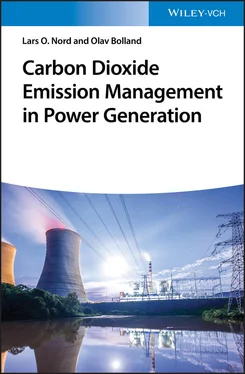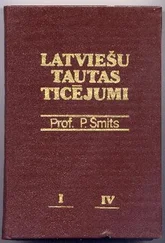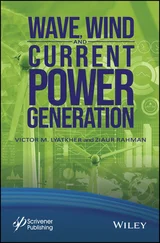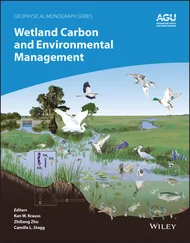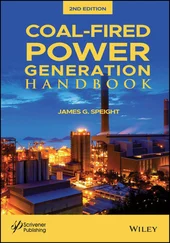| ACGIH |
American Conference of Governmental Industrial Hygienists |
| AEPD |
2-amino-2-ethyl-1,3-propandiol |
| AMP |
2-amino-2-methyle-1-propanol |
| AMPD |
2-amino-2-methyl-1,3-propandiol |
| Ar |
Argon |
| ASHRAE |
American Society of Heating, Refrigeration and Air Conditioning Engineers |
| ASU |
air separation unit |
| ATR |
autothermal reforming |
| AZEP |
advanced zero emission power plant |
| BGL |
British Gas Lurgi |
| BoA |
Braunkohlekraftwerk mit optimierter Anlagentechnik (lignite-fired or Brown coal-fired power station with optimised plant engineering) |
| BOD |
biological oxygen demand |
| CA |
carbonic anhydrase |
| CAR |
ceramic autothermal recovery |
| CC |
combined cycle |
| CCS |
carbon dioxide (CO 2) capture and storage |
| CF |
correction factor (considers real gas effects) |
| CFB |
circulating fluidised bed |
| CFBC |
circulating fluidised bed combustion |
| CH 4 |
methane |
| CHP |
combined heat and power |
| CLC |
chemical looping combustion |
| CLM |
contained liquid membrane |
| CO |
carbon monoxide |
| CO 2 |
carbon dioxide |
| COS |
carbonyl sulfide |
| CPO |
catalytic partial oxidation |
| DCC |
direct contact cooler |
| DEA |
diethanolamine |
| DEG |
diethylene glycol |
| DGA |
diglycolamine |
| DIPA |
diisopropylamine |
| DRA |
drag reducing agent |
| ECBM |
enhanced coal bed methane |
| ECO |
economiser |
| EDTA |
ethylenediaminetetraacetic acid |
| EG |
ethylene glycol |
| EGR |
enhanced gas recovery |
| EMC |
electrochemically modulated complexation |
| ENCAP |
ENhanced CAPture project |
| EOR |
enhanced oil recovery |
| ESA |
electric swing adsorption |
| ESP |
ElectroStatic Precipitator |
| EU |
European Union |
| EVA |
evaporator |
| EXH |
exhaust (gas) |
| FBHE |
fluidised bed heat exchanger |
| FGD |
flue gas desulfurisation |
| GDP |
gross domestic product |
| GE |
General Electric Company |
| GHG |
GreenHouse Gas |
| GWP |
global warming potential |
| H 2 |
hydrogen |
| H 2O |
water |
| H 2S |
hydrogen sulfide |
| HCN |
hydrogen cyanide |
| HEED |
hydroxyethylethylenediamine |
| HEEU |
hydroxyethylethyleneurea |
| Hg |
mercury |
| HHV |
higher heating value |
| HP |
high pressure |
| HR |
heat rate |
| HRSG |
heat recovery steam generator |
| HSE |
health, safety, and environment |
| HPT |
high-pressure turbine |
| HT |
high temperature |
| HTC |
hydrotalcite |
| HTS |
high-temperature water-gas shift |
| HTW |
high-temperature Winkler |
| HV |
heating value (?) |
| ICE |
Internal combustion engines |
| IEA |
International Energy Agency |
| IEA GHG |
International Energy Agency Greenhouse Gas R&D Programme |
| IGCC |
integrated gasification combined cycle |
| IL |
ionic liquid |
| IPCC |
Intergovernmental Panel on Climate Change |
| IP |
intermediate pressure |
| IPT |
intermediate pressure turbine |
| IRCC |
integrated reforming combined cycle |
| ISO |
International Organization for Standardization |
| ITM |
ion transport membrane |
| IUPAC |
International Union of Pure and Applied Chemistry |
| LHV |
lower heating value |
| LIDAR |
light detection and ranging |
| LNG |
liquefied natural gas |
| LP |
low pressure |
| LPT |
low-pressure turbine |
| LT |
low temperature |
| LTS |
low-temperature water-gas shift |
| MCM |
mixed conductive membrane |
| MDEA |
methyl diethanolamine |
| MEA |
monoethanolamine |
| MHI |
Mitsubishi heavy industries |
| MIX |
mixer |
| MOFs |
metal–organic frameworks |
| MMV |
measurement, monitoring, and verification |
| MP |
medium pressure |
| MWGS |
membrane water-gas shift |
| N/A |
not available |
| N 2 |
nitrogen |
| N 2O |
nitrous oxide |
| NB |
nota bene (Latin for pay attention, take notice) |
| NETL |
National Energy Technology Laboratory |
| NG |
natural gas |
| NGCC |
natural gas combined cycle |
| NH 3 |
ammonia |
| NIOSH |
US National Institute of Occupational Safety and Health |
| NIMBY |
not in my backyard |
| NO |
nitric oxide |
| NO x |
term for mono-nitrogen oxides – NO and NO 2 |
| NTNU |
Norwegian University of Science and Technology |
| NTP |
normal temperature (298.15 K or 25 °C) and pressure (1 atm) |
| O 2 |
oxygen |
| OSHA |
US Occupational Safety and Health Administration |
| OSPAR |
name of both, a commission and convention for the protection of the marine environment of the north east Atlantic |
| PCC |
pulverised coal combustion |
| PE |
polyethylene |
| PEI |
polyethyleneimine |
| PFBC |
pressurised fluidised bed combustion |
| pH |
measure of the acidity or basicity of a solution |
| PI |
polyimide |
| PLONOR |
pose little or no risk to the environment (a list of substances/preparations used and discharged offshore, which are considered to pose little or no risk to the environment; it is prepared and released by OPAR) |
| POX |
partial oxidation |
| PP |
polypropylene |
| PRE |
pre-reformer |
| PS |
polysulfone |
| PSA |
pressure swing adsorption |
| PTFE |
polytetrafluoroethylene |
| PVDF |
polyvinylidene fluoride |
| PTFE |
polytetrafluoroethylene, also known by the DuPont brand name Teflon |
| RTI |
Research Triangle Institute |
| RTIL |
room temperature ionic liquids |
| SACS |
saline aquifer CO 2storage programme, monitoring the sleipner CO 2injection project |
| SCOC |
semi-closed oxy-combustion |
| SCR |
selective catalytic reactor (for the removal of NO and NO 2) |
| SE |
sorption-enhanced |
| SERP |
sorption-enhanced reaction process |
| SEWGS |
sorption-enhanced water-gas shift |
| SF |
supplementary firing |
| SFGD |
seawater flue gas desulfurisation |
| SMR |
steam methane reforming |
| SNCR |
selective non-catalytic reduction |
| SO 2 |
sulfur dioxide |
| SOFC |
solid oxide fuel cell |
| SPECC |
specific energy penalty |
| SR |
steam reforming |
| ST |
steam turbine |
| STP |
standard conditions for gases; standard temperature (273.15 K or 0 °C) and pressure (10 5Pa) as defined by IUPAC (McNaught 1997) |
| SUP |
super-heater |
| TEA |
triethanolamine |
| TEG |
triethylene glycol |
| THAM |
tri(hydroxymethyl) aminomethane |
| THF |
tetrahydrofuran |
| ThOD |
theoretical oxygen demand |
| TIT |
turbine inlet temperature |
| TSA |
temperature swing adsorption |
| TSIL |
task-specific ionic liquid |
| US |
United States (refers to USA) |
| USA |
United States of America |
| VPSA |
vacuum pressure swing adsorption |
| VSA |
vacuum swing adsorption |
| WGS |
water-gas shift |
| YSZ |
yttria-stabilised zirconia |
